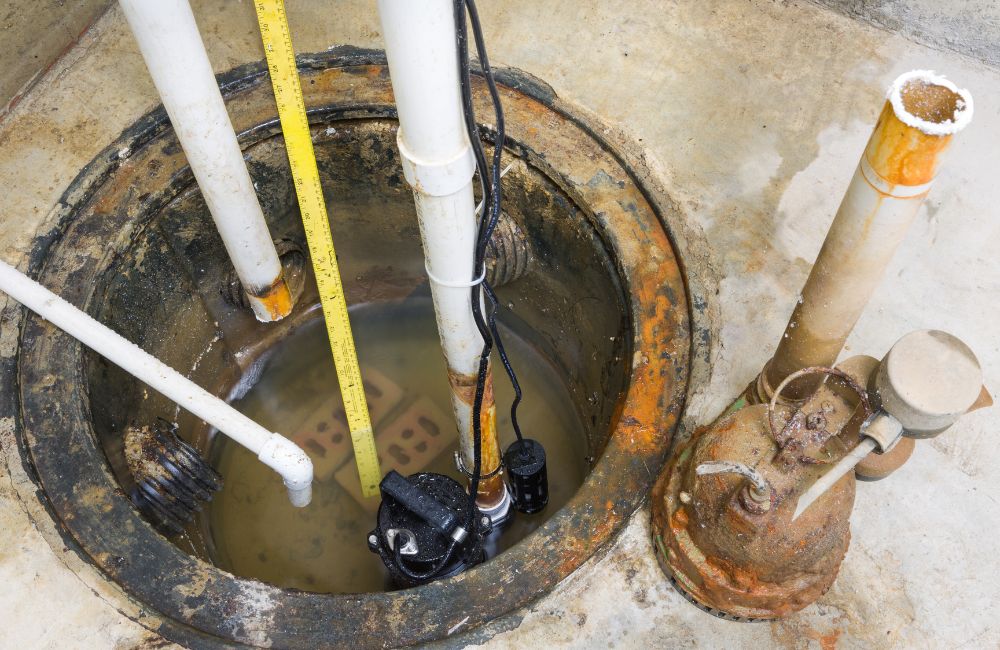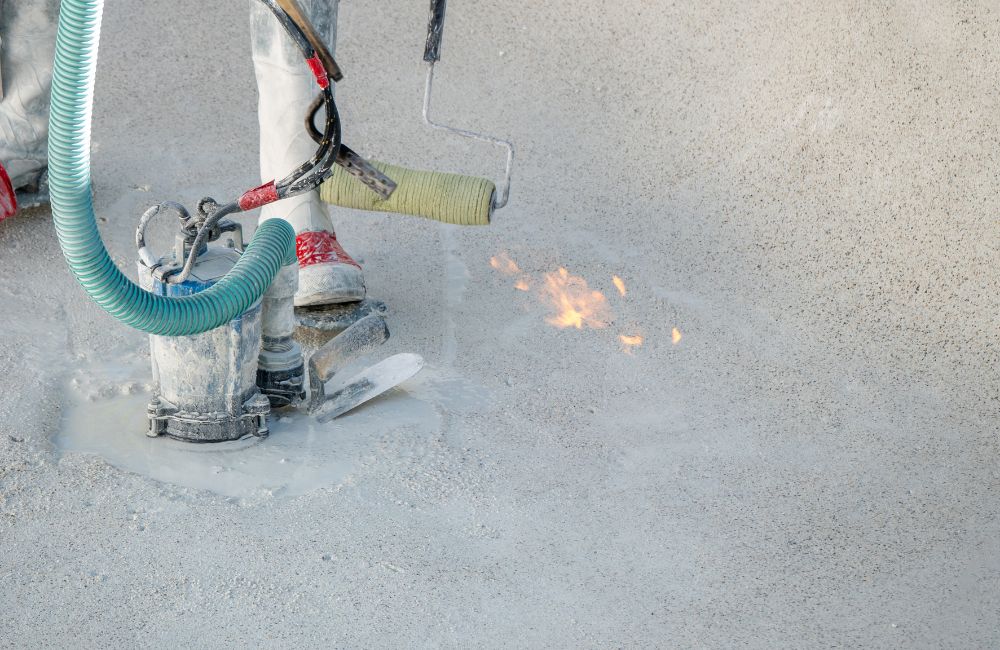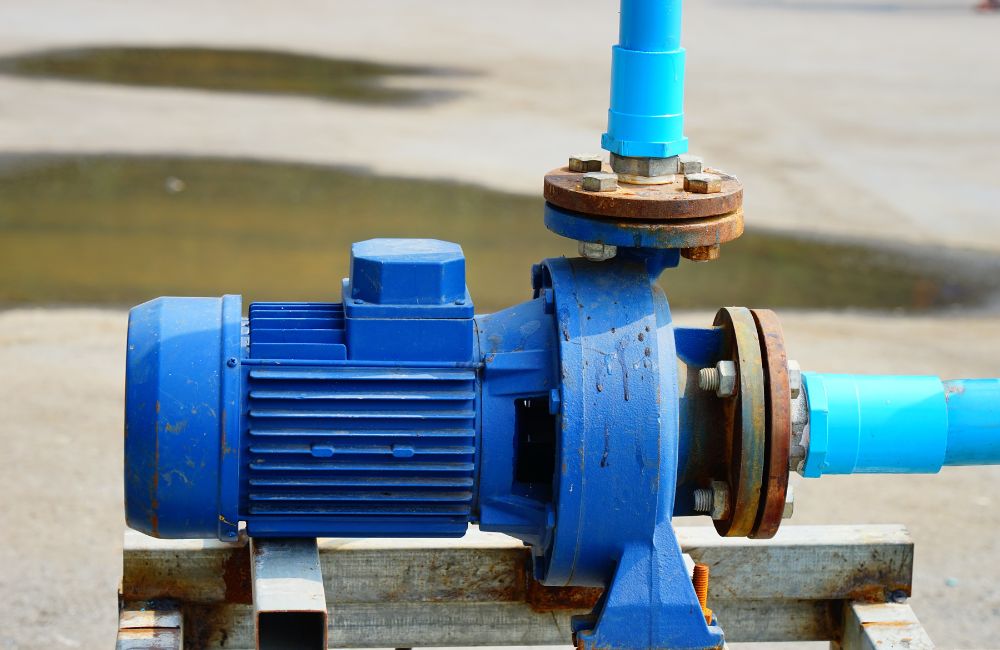Summer storms can bring torrential rains and flash floods, which often leads to water accumulation in basements and crawl spaces. A reliable sump pump is essential for homeowners to protect their properties from potential flooding. However, to ensure a sump pump is ready to handle heavy rainfall, it’s crucial to prepare it properly before the storm season starts.
A professional sump pump installer can help homeowners in Torrington, CT, ensure their systems are in peak condition, offering guidance on maintenance and readiness for extreme weather.
Table of Contents
Key Takeaways
Why Summer Storms Demand Extra Preparation
How a Sump Pump Works During Heavy Rainfall
Signs Your Sump Pump Needs a Tune-Up Before Storm Season
How a Sump Pump Installer Can Help
5 Tips to Prepare Your Sump Pump for Summer Storms
1. Ensure the Sump Pump Is Properly Connected to a Working Power Source
2. Test the Sump Pump’s Functionality by Filling the Sump Basin
3. Inspect the Sump Pump and Clean the Basin
4. Watch for Corrosion, Unusual Noises, or Vibrations
5. Regularly Monitor the Sump Pump During Storm Season
When to Call a Sump Pump Installer for Immediate Assistance
1. Handling a Sudden Sump Pump Failure
2. After-Flood Inspections
3. Preparing for Future Storms
4. Electrical Issues or Tripped Circuits
Frequently Asked Questions
Ready to Prepare Your Sump Pump for Summer Storms? Contact L&P Plumbing Today!
| Key Takeaways ✔ Ensure the sump pump is connected to a reliable, grounded outlet and has a backup battery to maintain operation during power outages. ✔ Fill the sump basin with water to check that the pump activates and drains properly; adjust the float switch as needed. ✔ Regularly remove debris, dirt, and sludge from the sump basin to maintain efficient water flow and prevent clogs. ✔ Look for signs of rust, unusual sounds, or vibrations that could indicate mechanical issues needing professional repair. ✔ Establish a routine check-up schedule and watch for signs of malfunction during heavy rains to address issues quickly. ✔ Consider replacing older sump pumps with newer, more energy-efficient models that offer better performance and durability. ✔ If water remains in the basin without pumping, it may signal a problem with the discharge line or float switch that requires professional attention. ✔ Frequent tripping of the circuit breaker or other electrical issues should be addressed immediately by a sump pump installer for safe and reliable operation. |
Why Summer Storms Demand Extra Preparation
Summer storms often bring sudden downpours that can overwhelm a home’s drainage system. When rainwater accumulates faster than it can drain away, it can seep into basements, causing water damage and structural issues. The sump pump market has seen substantial growth, driven by the increasing frequency of extreme weather events, including heavy rainfall and flooding.
A sump pump prevents water damage by automatically pumping out water from the basement or crawl space. To ensure the system performs as needed, working with a sump pump installer is essential. Their expertise ensures that the pump is prepared for the unexpected challenges that summer storms may bring. This includes:
- Intense Rainfall: Summer storms can drop several inches of rain in a short period, leading to flash flooding.
- Power Outages: Thunderstorms can often knock out power, which can disable sump pumps if they are not equipped with a backup power source.
- Basement Vulnerability: Basements and low-lying areas are especially susceptible to water intrusion, making a functioning sump pump a necessity.
How a Sump Pump Works During Heavy Rainfall
A sump pump is positioned in a sump basin, typically the lowest point in a basement or crawl space. Its function is simple: as water fills the basin, a float switch rises, activating the pump. The pump then pushes the water through a discharge pipe, moving it away from the home’s foundation. This process prevents water from pooling and seeping into the basement. Here are additional considerations:
- Discharge Pipe Placement: The discharge pipe must be clear of obstructions and positioned to direct water away from the foundation. A sump pump installer can verify that it’s functioning correctly.
- Backup Systems: A sump pump installer may recommend a secondary or backup system to ensure continuous operation during power outages or extreme water flow.
Signs Your Sump Pump Needs a Tune-Up Before Storm Season
Before the summer storms arrive, homeowners should look out for signs that their sump pump might need maintenance. Homeowners must look out for the following signs:
- Frequent Cycling: A pump that cycles on and off too often may have a problem with the float switch or an improperly set water level.
- Continuous Running: This could indicate a problem with the float switch or excessive water accumulation, which a sump pump installer can address.
- Noisy Operation: Grinding or rattling sounds often point to mechanical issues like a worn impeller, which should be checked by a sump pump installer.
- Slow Drainage: A slow-draining sump pump may be a sign of a clogged intake or discharge line, which needs professional cleaning.
- Visible Rust or Corrosion: Rust or corrosion on the sump pump’s body or components can indicate that the pump is deteriorating and may fail when it’s most needed. Corrosion can compromise the pump’s efficiency and even cause leaks in the system.
- Water in the Sump Basin Without Activation: If water is present in the sump basin, but the pump doesn’t activate, it could be a sign of an electrical or mechanical failure. This might occur due to a tripped circuit breaker, a faulty float switch, or motor issues.
How a Sump Pump Installer Can Help
A professional sump pump installer in Torrington, CT, provides essential expertise and services that ensure a sump pump is fully prepared for the challenges of summer storms.
With the growing awareness of the importance of flood prevention and home protection, the North American sump pump market is expected to grow to USD 244.97 million by 2030. This growth highlights the increasing demand for professional sump pump services, as more homeowners recognize the need for reliable systems and expert installation.
Professional Inspection Services
A thorough inspection from a sump pump installer ensures that every part of the pump is in top condition. They have the expertise to identify issues that homeowners might overlook. Key points of inspection include:
- Float Switch Assessment: Ensures that the float switch activates at the right water level.
- Electrical Safety Check: Verifies that the pump is properly grounded and connected to a functioning outlet.
- Component Wear and Tear: Identifies any worn-out parts that might fail during a storm.
Upgrading and Replacing Older Models
For homeowners with older sump pumps, a sump pump installer may recommend upgrading to a newer, more efficient model. They can guide homeowners in choosing the right model based on the size of their home, the average rainfall in their area, and the specific needs of their basement or crawl space. This can include:
- Energy-Efficient Models: Use less electricity while providing the same level of performance.
- Battery Backup Systems: A sump pump installer can recommend systems that keep the pump running even during power outages.
- Durability: Newer models are often built to last longer and require less frequent maintenance.
Emergency Services During Storm Season
When a sump pump fails during a storm, immediate action is necessary to prevent flooding. A professional sump pump installer can provide emergency services, including quick repairs, pump replacements, and troubleshooting. This rapid response can mean the difference between a dry basement and significant water damage. Here’s why:
- 24/7 Availability: Many sump pump installers offer round-the-clock service during storm season.
- Quick Diagnostics: Their experience allows them to quickly identify and resolve common issues like clogged discharge lines or malfunctioning switches.
- Temporary Solutions: In case of a serious issue, a sump pump installer can provide temporary fixes until a permanent solution is installed.
5 Tips to Prepare Your Sump Pump for Summer Storms
Properly preparing the sump pump before the arrival of summer storms is crucial to prevent basement flooding and water damage. Here are five essential tips from a professional sump pump installer to ensure the system is ready for heavy rainfall.
1. Ensure the Sump Pump Is Properly Connected to a Working Power Source
A sump pump needs a reliable power source to operate effectively. If the power goes out during a storm, the pump won’t work, which can lead to potential flooding. It’s crucial to make sure the pump is plugged into a grounded outlet and has a backup power system.
- Test the Outlet: A sump pump installer can use a voltage tester to ensure the outlet is providing adequate power. This prevents surprises when the pump needs to activate.
- Install a Backup Battery System: A sump pump installer can install a battery backup to keep the pump running during power outages, which are common during storms.
- Check the Power Cord Condition: Over time, power cords can wear out. A sump pump installer will inspect the cord for signs of fraying or damage that could lead to power loss.
2. Test the Sump Pump’s Functionality by Filling the Sump Basin
Testing the sump pump by adding water to the basin ensures that it activates correctly. This dry-run test allows homeowners to catch potential issues before heavy rainfall hits.
- How to Safely Test Your Pump: Pour enough water into the sump basin to raise the float switch, ensuring the pump starts and drains the basin effectively. If the pump doesn’t activate, a sump pump installer can troubleshoot the issue.
- Adjusting the Float Switch: If the float switch is set too high or too low, the pump may not start correctly. A sump pump installer can adjust the switch to ensure it triggers at the appropriate water level.
Should the pump fail to start, it could indicate a mechanical issue. A sump pump installer can diagnose problems such as a clogged intake, a faulty motor, or a misaligned switch.
3. Inspect the Sump Pump and Clean the Basin
Keeping the sump basin clean is crucial for smooth operation. Dirt, debris, and sludge can build up over time, affecting the pump’s efficiency.
- Remove Debris and Dirt: A sump pump installer will clean out the basin, removing any debris that could block the pump’s intake and hinder water flow.
- Check the Discharge Line: Blocked discharge lines can prevent water from exiting the basin, causing backflow. A sump pump installer can ensure the line is free of clogs and positioned to direct water away from the home.
- Inspect for Sludge Buildup: Sludge can restrict water flow, making it harder for the pump to drain the basin. Regular cleaning by a sump pump installer helps prevent buildup and keeps the pump running smoothly.
4. Watch for Corrosion, Unusual Noises, or Vibrations
Unusual sounds or vibrations can indicate a problem with the pump. Rust or corrosion, especially around the motor and parts, can also affect performance.
- Identifying Corrosion: Corrosion, often indicated by rust, discoloration, pitting, or flaking, weakens metal parts, which can lead to leaks or motor issues. A sump pump installer can assess and replace corroded components.
- Addressing Strange Sounds: Grinding or rattling sounds often indicate mechanical issues like a worn-out impeller. A sump pump installer can identify and repair these problems.
If the pump is making strange sounds or vibrating excessively, it’s best to consult a sump pump installer. Their expertise ensures that any underlying issues are resolved quickly, preventing minor issues from becoming major repairs.
5. Regularly Monitor the Sump Pump During Storm Season
Routine checks can catch small problems before they become costly issues. During a storm, monitoring the sump pump’s performance ensures it’s operating as needed.
- Set a Routine Check-Up Schedule: A sump pump installer can provide a maintenance schedule, such as checking the pump’s discharge line and cleaning the inlet screen every few months, ensuring the system remains efficient throughout the storm season.
- Know the Warning Signs of Malfunction: If the pump cycles too frequently, runs continuously, or doesn’t pump water as quickly as before, it may need professional attention. A sump pump installer can diagnose and address these signs.
- Keep Emergency Contacts Handy: Homeowners should keep the contact information of a trusted sump pump installer ready in case of urgent repairs during heavy rains.

When to Call a Sump Pump Installer for Immediate Assistance
Knowing when to seek professional help can make a significant difference in preventing water damage during a storm. Here are key situations where contacting a sump pump installer is crucial to ensuring your system continues to operate effectively.
- Handling a Sudden Sump Pump Failure
If a sump pump stops working during a storm, immediate action is critical. A sump pump installer can quickly diagnose and repair the problem, whether it’s a power issue, a clogged intake, or a failing motor. Their swift intervention can prevent water from flooding the basement, saving homeowners from extensive damage.
- After-Flood Inspections
Even after the storm has passed, a sump pump installer can perform an inspection to assess any damage. They can check for leaks, test the pump’s efficiency, and recommend repairs or replacements if needed. This post-storm assessment is crucial to ensure the pump is ready for the next bout of heavy rain.
- Preparing for Future Storms
A sump pump installer can help homeowners plan for the future by recommending preventive measures, like installing a secondary pump or improving drainage systems. By taking these steps, homeowners can ensure that their sump pump remains a reliable line of defense against flooding, year after year.
- Electrical Issues or Tripped Circuits
If the sump pump frequently trips the circuit breaker or shows signs of electrical problems, such as flickering lights or unusual power surges, it’s essential to call a sump pump installer immediately. Electrical issues can pose safety risks and may indicate underlying problems with the pump’s wiring or motor. A professional can safely address these issues and ensure the pump operates reliably during storms.
Frequently Asked Questions
How often should a sump pump be serviced by a sump pump installer?
It’s recommended to have a sump pump professionally serviced at least once a year. Regular maintenance helps identify issues like wear and tear or electrical problems before they cause failures. A sump pump installer can ensure that the system is ready for heavy rainfall and operating efficiently.
What should I do if my sump pump is running but not pumping water?
If your sump pump runs but doesn’t remove water, it could be due to a clogged discharge line, a malfunctioning impeller, or a problem with the check valve. These issues prevent water from being properly expelled from the basin. A sump pump installer can diagnose the problem and make the necessary repairs to restore functionality.
Can a sump pump installer help with installing a battery backup system?
Yes, a professional sump pump installer can install a battery backup system to keep your pump running during power outages. This backup system ensures the pump remains active when storms cause power failures. A sump pump installer can recommend the best backup options based on your home’s specific needs.
What is the average cost of hiring a sump pump installer?
The cost of hiring a sump pump installer varies depending on the complexity of the job and the type of sump pump being installed. Basic installations might range from $300 to $600, while more complex setups can exceed $1,000. It’s best to request a quote for an accurate estimate based on your specific situation.
How do I know if my sump pump needs to be replaced?
Signs that a sump pump may need replacement include frequent failures, visible rust, excessive noise, or being over 10 years old. An aging sump pump is more likely to fail during heavy rains, leading to potential basement flooding. A sump pump installer can assess the condition of your pump and recommend if a replacement is necessary.

Ready to Prepare Your Sump Pump for Summer Storms? Contact L&P Plumbing Today!
Don’t wait for a summer storm to test your sump pump’s reliability. Whether you need an inspection, a battery backup system, or a complete upgrade, L&P Plumbing in Torrington, CT, has the expertise to keep your basement dry and protected. Our team of professionals is always ready to help homeowners get the protection they deserve through efficient installations.
Reach out to L&P Plumbing today and ensure your home in Torrington, CT, is ready for whatever the storm season brings!

